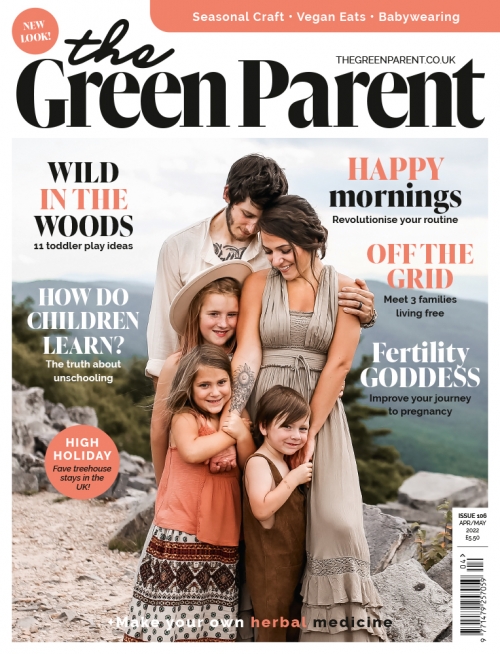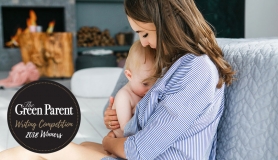In 1982 a small non-fee paying secondary school serving the rural community of Hartland, Devon, and the outlying villages, opened its doors for the very first time. The Small School had been set up by a group of parents who were unhappy about their children having to spend a considerable amount of time every day travelling to a large comprehensive school in a neighbouring town. They were also very concerned about the style of education on offer and values imposed in mainstream education. Satish Kumar, editor of Resurgence Magazine, was the driving force behind the setting up of The Small School in Hartland, initially driven by the desire for a more human scale education for his own children. He soon saw, however, how the success of the setting up of one small school had a positive impact on the children, their families and the community. He became inspired by the prospect of helping other communities to set up their own schools too, and so the national organisation Human Scale Education (HSE) was born a few years later in 1985. HSE has grown from strength to strength and now has around 300 members. In addition to Satish Kumar, the patrons are Professor Tim Brighouse, Sir Bernard Crick, Jonathon Porritt, Professor Richard Pring and Anita Roddick. Before their deaths, Lord Young of Dartington and Sir Yehudi Menuhin were also patrons. The organisation believes that learning is a lifelong process, not restricted just to schools, and that individuals learn best when they are recognised as individuals with differing interests and needs, and when there are positive, caring relationships. HSE believes in meaningful parental involvement in their children’s education; democratic schools; and for schools to be aware of environmental issues with the ultimate aim of becoming a sustainable community. HSE questions the value of a strictly imposed National Curriculum, over prescriptive literacy and numeracy hours, testing and league tables believing these are not in the best interests of our children, and could hinder rather than help a child’s education. HSE supports groups of individuals who are interested in setting up small schools and has been campaigning for some time for state support for these schools. Regular workshops entitled “How to Set up Your Own School” are held and ongoing support is offered to groups that manage to get a new school off the ground. As a result, numerous schools have already been assisted in becoming established, including one school that didn’t have a building, but a planned curriculum taking place in different members’ homes. The organisation has also helped support small village schools threatened with closure including Dame Catherine Harpur’s School in Ticknall, Derbyshire and The Priors School, Priors Marston, Warwickshire. Campaigners were assisted in identifying clauses in the original school deeds stating that the buildings were to provide free education for the children of the local community. In both cases the schools were closed by the local education authority but then reopened as independent schools affiliated to HSE. HSE would like all schools to be free of charge making them available to everyone. However some of the small schools charge fees in order to survive. Others ask for voluntary contributions in time or money but this can prove very difficult, and some schools have been unable to survive on this basis. In other countries such as Scandinavia, Holland, USA and New Zealand, small schools set up by local communities receive government funding and become part of the state system. HSE continues to campaign for funding and recognition for such schools in this country. In 1997 I visited fifteen HSE small schools as part of an independent research project. The smaller numbers of pupils helped to create calm and caring atmospheres in almost every school I visited. Parents and pupils had a considerable say in the running of each school helping to create a sense of trust and respect between the pupils and staff. The environments that prevailed meant that there was no need for staff to raise their voices at the pupils. The sense of calm was reinforced by the quality of the relationships between the pupils and teachers; parents and teachers; and between the pupils themselves. The children integrated well with others of different ages and learned to understand and support each other in a family type environment. The teachers were happier having flexibility, not being constrained by the National Curriculum, and being able to tailor intended learning to specifically meet the needs of individual pupils. Subsequently, the close and caring relationships, combined with an appropriately designed curriculum, helped to give the children confidence and a much greater sense of self-worth than if they had been part of a much larger school. There are currently over thirty small alternative schools in the UK affiliated to Human Scale Education, with between 6-60 pupils. Although all very different, they all have in common a desire to make education an enjoyable and valuable experience with strong spiritual values and community links. Parents are often involved in the setting up and/or the running of the school, and environmentally sustainable values are promoted. In keeping with the environmental values a number of the small schools offer only vegetarian lunches, and some of the schools involve the children in growing their own organic vegetables too. In addition to their work mentioned above, HSE are very involved in projects within state secondary schools such as restructuring large schools into smaller units, democratic school councils and environmental projects. They offer advice to people wishing to consider other educational alternatives such as home schooling. They also publish books and other materials to promote human scale approaches in the state system. Perhaps you would like to find out if there is an affiliated school near you, and if there isn’t, you may like to attend one of their workshops and eventually set up your own? After all, that’s what I did …..
How I set up my own small school
After my first child was born I decided to combine motherhood with teaching by opening a children’s nursery. I can say with confidence that I was not profit driven and ran the nursery to the best of my ability, treating each child as an individual and identifying their individual interests and needs. It was a caring and comfortable environment and the children and their parents were more than happy with the service provided. As time went on, however, I became aware of more and more problems that children were experiencing after they left the nursery and started “big” school. My son was among them. When he started school he was a happy, confident and outgoing four-year-old. But something happened to destroy his confidence. He became withdrawn and sullen, and it was obvious his self-esteem was suffering. We knew he was struggling with his reading but when I suggested to the school he may be dyslexic, I was fobbed off and regarded as a fussy parent. By the time my son was eight, I was growing increasingly concerned about his well-being and contacted Human Scale Education. I was invited on a two day workshop in London entitled “How to set up a Small School”. That weekend was definitely a life changing experience for me. A public meeting in my home town the following month attracted a lot of public interest as well as making front page news of our two local newspapers. And ten months later, after lots of hard work, our brand new small school opened with twelve pupils aged from 4 – 11 years. Initial applications for trust funding had failed and the only way the school could open was to use a room above the nursery and for me to give my teaching services free of charge while appointing a manager to run the nursery in my absence. Looking back, I can now agree wholeheartedly with my bank manager when he said this was “financial suicide”, but I have no regrets. It was something that had to be done. Before the end of the first term we had received several pieces of amazing news. First we received a donation of £3,000. Then a parent’s letter appealing for trust funding resulted in a payment of £10,000 with an agreement to send another £10,000 in 12 months time if the school continued to make good progress. And then, unbelievably, a benefactor bought a recently disused school building for us to use free of charge! A local community project decorated the idyllic Victorian school building on the banks of the River Eire. The parents and children spent the Christmas holiday cleaning and helping with the move. It wasn’t long before we were receiving other offers of help. We had a student teacher in her final year wanting an “alternative” placement for a whole term. We also had several experienced teachers offering services free of charge including a retired science lecturer; a maths tutor at a Teacher Training college and another maths teacher who had become disillusioned with the state system and was now home-educating. Other teachers were happy to teach at minimum rates including music, French and geography teachers. Parents too shared their skills and talents.
One parent took responsibility for setting up the organic garden and compost heap; another created a friendlier playground environment; another showed the children how to use a spinning wheel; others helped with sculpting and other creative activities; another taught individual children to play the violin. The list was endless. We always received highly favourable reports whenever we received visits from an inspector. We could truly offer a broad and balanced curriculum at minimum costs. Fund-raising, however, was an ongoing battle. Unfortunately the trust funding came to an end after three years and sufficient funding could not be found elsewhere. After great soul searching, a decision was made by the Trustees to close the school. Far from failing, the Small School had touched and changed so many lives. The adults could see that alternatives do work, although more funding is needed. All the children left with a greater self-esteem than when they had first joined us. Some returned to mainstream education with more confidence than before and some never did return to school but continued their education at home!







